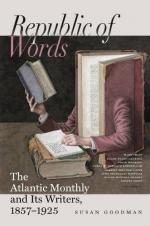Glance for a moment through this instrument, so adjusted as to bear upon a figure not undeserving of a closer study. Night has fallen on the bleak and sombre scenery of the Sierra Guadarrama. The gray outlines of the Escorial are scarcely distinguishable from those of the dusky hills amid which it stands. No light is thrown forth from its eleven thousand windows, save in this retreating angle formed by the junction of the palace with the convent, or—to speak according to the architect’s symbolical design—of the “handle” with the “gridiron.” The apartment from which this feeble ray emerges is of small size,—not more than sixteen feet square,—but having on two sides arched recesses that somewhat increase its capacity. One of these alcoves contains a bed, and a door opening into an adjoining oratory, which has immediate communication with the chancel of the great church, so that an occupant of the bed might, if supported in a sitting posture, have a view of the high altar and witness the elevation of the host. This alcove is decked with many little images of saints, which, with a few small pictures, of rare beauty,—the subjects all of a religious character,—and two cabinets of a curious, agate-colored marble, a product of the New World,—are the only ornaments that relieve the extreme simplicity of the apartment, with its plain white walls and floor of brick. The other alcove is occupied by a writing-table, where sits, intent on the employment that consumes by far the greater portion of his time, the potent monarch of Spain, the “most pious and most prudent” Philip the Second. A drowsy secretary, who waits for the completion of the document which he is to copy, is his only attendant.
Does it not seem strange that ambassadors and nuncios should become confused and lose all recollection of the addresses they had committed to memory, in the presence of a prince whose exterior so ill accords with the grandeur of his titles and the vastness of his power? His form is below the middle height and very slender, the limbs having even an attenuated look. The whole appearance is that of a man of delicate and even feeble organization. The blonde complexion, the pale blue eyes, and the light sandy hue—save where they are prematurely touched with gray—of the hair, moustache, and short, pointed beard, all indicate the Flemish origin of one who would fain be regarded as “wholly a Spaniard.” The protruding under-jaw is another proof of his descent from the Burgundian rulers of the Netherlands. The expression of the countenance, as we find on a closer inspection, is not so easy to define. There is no variable play of light and shade upon the features, no settled look of joy or sorrow, no trace of anger or of weariness. Is it because the subject with which his pen is busied is too unimportant to call forth any emotion in the writer? It may be a mere matter of routine, connected with the regular business of his household or the ordinary affairs of state. But if it be an answer




